Lucerna is one of the best known halls in the centre of Prague, mainly for concerts, balls, dancing competitions etc. The capacity is over 2 500 people.


Lucerna is one of the best known halls in the centre of Prague, mainly for concerts, balls, dancing competitions etc. The capacity is over 2 500 people.
2500 people
Štěpánská 61
Praha

MeetFactory is a non-profit international center for contemporary art founded in 2001 by the artist David Černý. In the wake of the destructive floods of 2002, MeetFactory was forced to evacuate its previous premises in Holešovice. The project was resurrected three years later in an industrial building in Prague's quarter Smíchov, in a unique space squeezed between a motorway and an active railroad. The program started after a substantial reconstruction in 2007.
The program of MeetFactory consists in four dramaturgic departments - music, theatre, gallery and the artist-in-residence program.
The music program presents the international independent music scene, holding six to eight performances per month in the music hall fitted with high-end audio equipment.
The theatre program focuses on contemporary prose, as well as experimental interdisciplinary projects, often involving visual artists, musicians, or non-actors.
The three galleries offer space for critical confrontation of the national and international art scenes. The MeetFactory Gallery focuses on original curatorial projects, while the Kostka Gallery presents solo shows of emerging and established artists. The program of the Wall Gallery, a side-facade of the building, comprises of large-scale realizations beyond street art.
The international Artist-in-Residence program is the largest studio program in the Czech Republic. MeetFactory facilitates fifteen studios, which annually host over thirty visual artists, curators, musicians, theatre directors or writers. We foster the involvement of our artists in residence not only within the programming of MeetFactory, but also in the context of the Czech and Central European art scenes.
Besides the four dramaturgic departments the program of MeetFactory is oriented on inter-genre and educational projects which offer the public new forms of encounter with contemporary art.
750 people
Ke Sklárně 3213/15
Praha
150 00
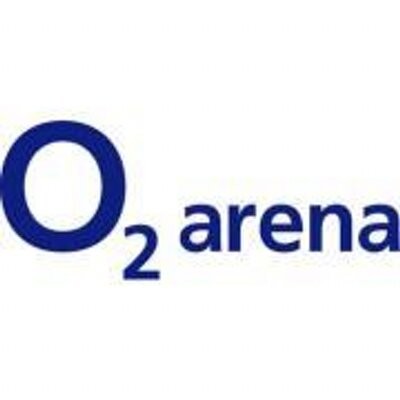
The O2 arena is one of the leading facilities in Europe with a capacity of up to 20,000. Every year, the O2 arena hosts dozens of attractive sporting and cultural events. It was opened in 2004 for the ice-hockey championship and since that time it has welcomed over 600,000 people every year.
The O2 arena is located in north-eastern Prague, approximately 10 km from the city centre. It occupies an advantageous position between the interior road ring, which provides comfortable transport from other sections of the city, and the external ring road, which allows a quick connection to the outgoing motorway and the international highway network.
The O2 arena offers more than fourty spatial, functional or technical variations of the stage surface and the auditorium. At a large rock concert, the O2 arena can host up to 20,000 spectators. The latest technology available at the O2 arena include, e.g., a giant video cube, internal TV circuit, display facades, its own TV studio, sliding stands, excellent acoustics, light park and advanced telecommunication equipment.
In addition to the standard auditorium, the O2 arena offers non public floors for skybox and club seat tenants. It also features business areas with necessary facilities, a number of lounges, restaurants and bars along with seminar facilities, press conference rooms and congress halls.
O2 arena is owned and operated by Bestsport, a.s., which is part of PPF Group. PPF invests into multiple market segments such as banking and financial services, telecommunications, biotechnology, real estate, insurance and agriculture. PPF's reach spans from Europe to Russia, the USA and across Asia. PPF Group owns assets of EUR 27 billion (as at 31 December 2016).
18000 people
Českomoravská 2345/17
Praha 9
190 00

4500 people
Českomoravská 2345/17
Praha 9
190 00
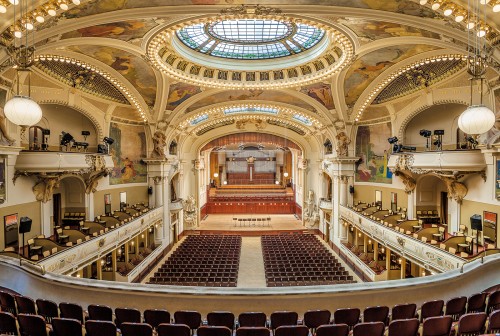
The largest area of the Municipal House is the central Smetana Hall, accessible from the foyer on the first floor. By naming the concert hall, Prague paid tribute to the creator of Czech modern music, Bedřich Smetana. Of the plastic decoration, the most remarkable are the stucco groups Vyšehrad and Slavonic Dances on the sides of the stage by Ladislav Šaloun. The sculptor thus happily solved the question of commemorating the second genius of Czech music, Antonín Dvořák. To Smetana's Vyšehrad from the cycle of symphonic poems My Homeland, the character of the legendary Lumír, accompanied by a harp, narrates the myth of the homeland, while the opposite dancing couple is a motif taken from Dvořák's Slavonic Dances. In the interior of the Smetana Hall, however, there is a reminder of other Czech composers, whose portrait medallions are located on the bust of the lodges and the balcony.
Paintings of the ceiling panels and wall paintings by Karel Špilar contribute to the overall airy and at the same time festive impression of the space. Especially the monumental murals Music, Poetry, Dance and Drama are among the author's best works ever.
Smetana's Hall is primarily a concert hall for 1,200 listeners, in which since its opening the world's most important ensembles and performers have performed, and occasionally various social events take place here - especially traditional balls or popular representative gala dinners. The Prague Spring music festival is regularly opened and closed in the Smetana Hall.
1200 people
náměstí Republiky 1090/ 5
Praha 1
111 21
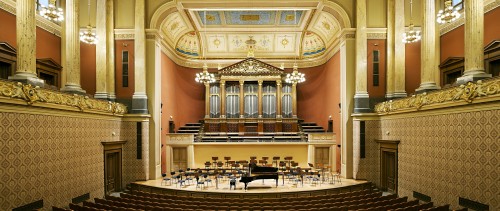
The world-famous concert hall has been the home stage of the Czech Philharmonic since the orchestra’s very first public performance on 4 January 1896, when it played here under the baton of Antonín Dvořák. The hall served its purpose until 1918 when a decision was taken to convert it into a plenary room for the new Czechoslovak parliament. Concert activities returned to Dvořák Hall in 1940–1942 under the project of architects Antonín Engel and Bohumír Kozák. Since then the hall has not seen any significant changes. Its central element is the organ, built according to Zítek’s and Schulz’s plans by Wilhelm Sauer from Frankfurt an die Oder.
1148 people
Alšovo nábřeží 12
Praha

The most recently added Rudolfinum hall was built between 1940 and 1942 under the project of architects Antonín Engel and Bohumír Kozák. This smaller concert hall, whose construction was carried out simultaneously with interventions in the adjacent Dvořák Hall, was decorated in a style inspired by Zítek’s and Schulz’s original designs, which makes it fit perfectly within the original concept of the building.
192 people
Alšovo nábřeží 12
Praha

One of the largest halls in Ostrava with a capacity of 1,000 seats. In the seating arrangement, it is possible to use 780 seats, 416 seats in the ball arrangement, 500 seats in the conference arrangement. At fashion shows, it is possible to use piers measuring 4 x 4 m, 6 x 4 m, 8 x 4 m and 10 x 4 m.
The hall can be sounded, it is possible to use playback and recording technology, rear and front projection of the image from a computer, video and camera on a 3 x 4 meter screen using a data projector.
The hall is equipped with stage lights and computer-controlled lights.
1000 people
28. října 2556/124
Ostrava
702 00
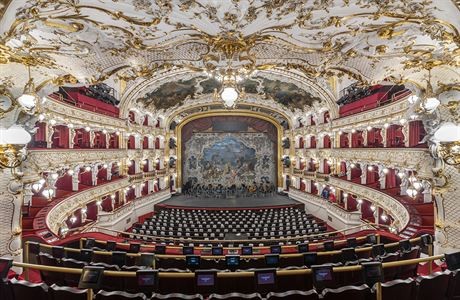
The State Opera is one of the four stages currently available at the National Theater in Prague. There is an ensemble of Opera ND and SoP, as well as an ensemble of Ballet SoP. The building is located at Wilsonova 4, Prague 1. The former German Prague opera stage is one of the most important music stages in Europe.
The building is located in the Municipal Monument Zone Vinohrady, Žižkov, Vršovice.
1041 people
Wilsonova 4
Praha 1
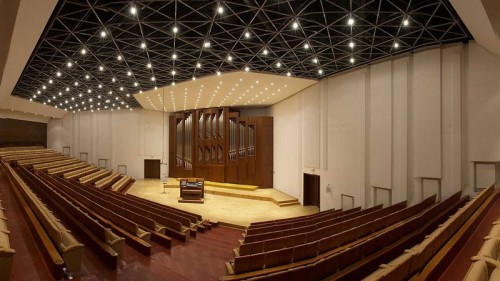
472 people
Sukova třída 1260
Pardubice